in this article, we will go through the Top 9 Tips To Pack Fragile Items For Moving to help your trip go smoother.
One of the most nerve-wracking aspects of moving is packing fragile items. So we’re understandably anxious that someone else may break or ruin these items. Packing may be stressful, especially when dealing with delicate items.
It all begins with the way you pack your fragile items. The use of tools and procedures necessitates special attention. A little extra effort and attention to packing will allow you to move even the most delicate items without a scratch.
1. General tips for transporting delicate items – Top 9 Tips To Pack Fragile Items For Moving
When you’re moving to a new place, one of the most important things you need to do is pack your fragile items in a way that ensures their safety until they reach their new home. Protecting your valuables and those you plan to bring along will not be an easy task.
For shipping fragile items, the only way to be successful is to follow a few preparatory steps first so that when you begin the actual packing task, you’re as prepared as possible.
To avoid breaking fragile objects while traveling, keep the following in mind:
Step 1: Make a list of all the particularly delicate items.
Determine which of your breakables are worth packing and transporting to your new home before you begin packing your delicate items.
Fragile belongings will require more packing supplies, which will increase the cost of your packing trip because you’ll have to spend more money on them. The extra time spent wrapping and bubble-wrapping fragile items will also increase the overall moving cost.
Determine which breakables in your home are worth the effort and which ones aren’t worth the effort. If you have anything old or damaged, don’t bring it with you.
Step 2: Obtain the proper moving equipment.
When it comes to moving fragile items, you need to know which packing materials to use and how to use those materials to ensure their safety. It is a bad idea, for example, to put your kitchen plates into boxes without any sort of protective covering or cushioning.
Packing your fragile and breakable items without proper protection is not an option, so here are the supplies you’ll need:
- Cardboard boxes. Make sure the cardboard boxes are strong, clean, and dry. Dish packs, or double-walled boxes, are ideal for packing delicate items such as kitchen plates and glasses because they are extra-strong and provide a better overall level of protection.
- Packing paper. Soft acid-free and ink-free packing paper is a must for this task. Each 500-sheet package costs about $25 on average.
- Bubble wrap. The use of bubble wrap when moving delicate items cannot be overstated. It’s a no-brainer that the air-filled plastic wrap will provide the best protection for your breakables as they travel between homes. It costs about $20 for a 150-foot box of Enviro-Bubble, which is 100% recyclable and reusable.
- Marker pens. Use a black marker pen to label each cardboard box with its contents and destination room. Handle with care and use a red marker to mark FRAGILE.
Step 3: Secure the cardboard boxes
Even if you’re using brand-new moving boxes, accidents can still happen on moving days, even if you’re packing delicate items. Boxes breaking under the weight of their contents is the most common occurrence when moving fragile items.
Before you begin packing your breakables, you should tape the bottom and sides of each cardboard box. To ensure the safety of your home’s delicate items, use high-quality packing tape to reinforce the cardboard boxes’ exteriors.
Always put a few sheets of packing paper or one sheet of bubble wrap inside each box to protect any fragile things you plan on placing within.
Step 4: Always include your breakables in the box labeling.
It’s bad form not to label a box as soon as you’ve finished packing it. No matter how well you organize your packing, if you don’t label the cardboard boxes that contain your extra-fragile belongings, you’re still making a grave error.
To save time once you’ve moved into your new home, mark the boxes that contain breakables, but it’s even more important to warn anyone handling the boxes that the contents may be harmed if certain precautions aren’t taken.
Each box containing fragile items should have the words FRAGILE and HANDLE WITH CAUTION written on both the top and bottom in red marker. To be sure, don’t forget to write down a description of what’s inside the box and where it’s going with a black marker.
2. How to pack plates for transport – Top 9 Tips To Pack Fragile Items For Moving
If you’ve ever broken a plate in the blink of an eye, you know how easy it is. And if you accept this assignment, you must ensure that none of your dishes are damaged until they reach the kitchen of your new home.
To ensure that your kitchen’s most fragile items are safe during a house move, here is the best way to pack plates for moving:
- Get dish packs if you can. Dish packs (also known as dish barrels) are cardboard boxes with thicker walls designed to protect your delicate kitchen plates. However, you’ll need to pay for the cardboard boxes much more before putting anything in them.
- Tape the boxes’ seams, bottoms, and sides for extra protection. Crumpled packing paper can also be used as an insulation layer on the bottom of each box.
- Go through your kitchen plates and discard any that are damaged, worn out, or just plain unappetizing. You won’t have to pack and move these delicate kitchen items to your new home’s kitchen when you move.
- Stack the plates in the center, then cover them with a couple of sheets of paper. A soft paper should be applied diagonally over the piece until it is completely covered. Tape the bundle of papers together.
- Make sure your most valuable or expensive kitchen plates are protected by an extra layer of bubble wrap by wrapping the plastic around the paper bundle and taping it in place.
- TO SAVE TIME AND SPACE, CHOOSE to pack several plates together. Use paper plates between the pieces to prevent them from coming into contact with one another in this situation
- STAND kitchen plates up on their edges, not flat, and place them in the dish pack one by one, starting with the bundles of plates in the kitchen. Always put the heavier kitchen items first, followed by the lighter ones, into the cardboard box.
- Make sure there are no empty spaces in the dish pack by filling them with pieces of newspaper. From a safety perspective, this is a significant step.
- Use a black marker pen to label the dish pack. On at least two sides of each box, write KITCHEN PLATES and FRAGILE.
3. How to pack your glasses for a move
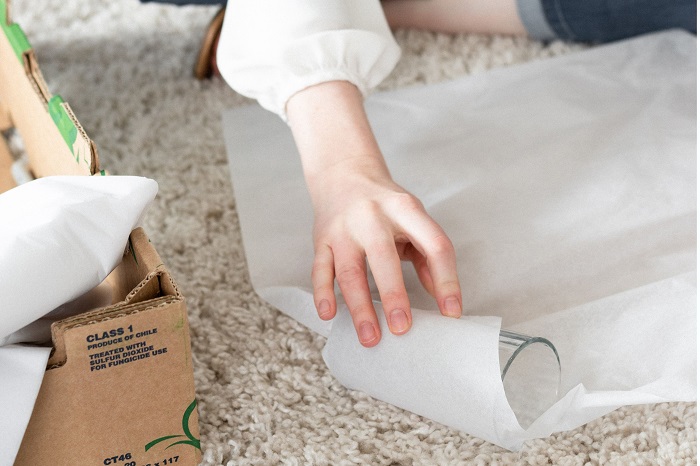
You’ll need to protect all of your kitchen wares, from simple drinking glasses to expensive crystal stemware, when moving to a new house. When you open a kitchen-bound box following a move and find too many pieces of broken glass, you’ll realize just how fragile those glass pieces are.
Make sure that doesn’t happen to you – find shards of glass in your new home when you begin unpacking. With a few good packing tips, you should be able to keep your most delicate kitchenware safe while moving.
If you’re moving, here’s how to pack crystal glasses safely:
- Before you wrap your glassware in bubble wrap and paper, sort it out first. Packing and moving glasses that have become damaged or stained over time, or that you’ve never liked or used, is a waste of time. Decide what to do with each glass as you inspect it.
- Put the large stack of wrapping paper on your designated packing station, such as the kitchen table.
- Put a kitchen glass in the middle of the stack of papers, then carefully tuck two sheets from one corner into the glass piece. Ink-free packing paper should be applied to all four corners of the breakable item.
- Wrap the newly formed paper bundle in little pieces of packing tape so that it doesn’t unwind itself when the box is moved.
- When not in use, bubble wrap is an excellent way to protect crystal stemware and other valuable glassware. Use tape to hold down a thick layer of bubble wrap around the stem of the glass. The second layer of bubble wrap should be placed over the first paper sheets to ensure that the glass is adequately protected.
- Transfer the glassware into a dish pack that has been pre-padded and pre-reinforced. Use regular boxes padded with crumpled paper or bubble wrap if you don’t have the special cardboard boxes designed for transporting dishes and glasses.
- For added safety, arrange the kitchen glasses with their openings facing down. Also, arrange them in a tight formation so that they are all next to each other.
- Once you’ve filled the moving box with paper-bundled glassware, add paper pieces between any empty spaces. During the move, there should be no movement of any kind inside the house.
- CLOSE and LABEL the box correctly. Write the HANDLE WITH CARE and FRAGILE warnings in red so that anyone handling the boxes will be more cautious.
4. The best way to pack electronics for moving
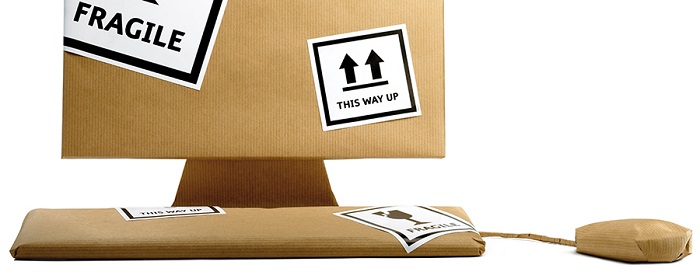
As a rule, electronic devices, especially those with sensitive displays like television sets and computer monitors, laptops, tablets, and smartphones, are delicate and easy to break. Electronic equipment is notoriously prone to damage due to static electricity, making it even more difficult to care for properly.
If you follow a few simple guidelines, you shouldn’t have any issues transporting your electronic equipment to a new location.
- Before moving electronic devices containing important files, ALWAYS BACK UP YOUR DATA. When it comes to moving, you never know what might happen. It’s best to store important digital data on a USB stick, an external hard drive, or an online storage service like Dropbox.
- When packing electronics for a move, make sure you use the right boxes. The best way to keep your expensive gadgets safe is to keep them in their original packaging. You should not underestimate the importance of original packaging when it comes to protecting your delicate electronic devices. If you don’t have the original factory packaging, you can simply use strong cardboard boxes of the same dimensions to keep your items safe.
- For extra-sensitive electronic equipment, use bubble wrap to cushion any non-original boxes.
- Before you unhook all the cords, snap a picture of how your devices are connected. If necessary, label the cables with small labels to keep them organized and avoid costly mistakes when reinstalling them after the move.
- Add an extra layer of protection by placing thick cardboard over sensitive screens or other vulnerable areas. To protect the most delicate parts of your devices, you should custom-fit the cardboard cut-outs. You must pack your flat-screen TV and desktop monitor in this manner.
- The first layer of protection is to wrap your electronic components in soft packing paper. Wrapping paper will keep your gadgets safe from dust and moisture as well, thanks to its protective properties.
- As a second line of defense for your fragile and delicate products, use anti-static bubble wrap. To avoid damaging screens or other fragile surfaces, do not place bubble wrap directly on them.
- Cover your larger electrical devices, such as your TV, monitor, desktop computer, printer, and scanner, with soft furniture blankets. To keep the blanket bundles safe on the journey, secure them with tape.
- In separate cardboard boxes, put all of the accessories, such as cables, chargers, remote controls, battery packs, and so on. After the transfer, you don’t want to spend hours labeling containers because you didn’t mark them correctly.
- If you can’t transport some of your expensive electronic equipment in your vehicle, consider obtaining additional insurance. Because the standard “protection” provided by your moving business is insufficient, you should obtain moving insurance from your movers or a third-party insurance provider instead.
5. Moving pictures and mirrors? Here’s how to pack them up safely.
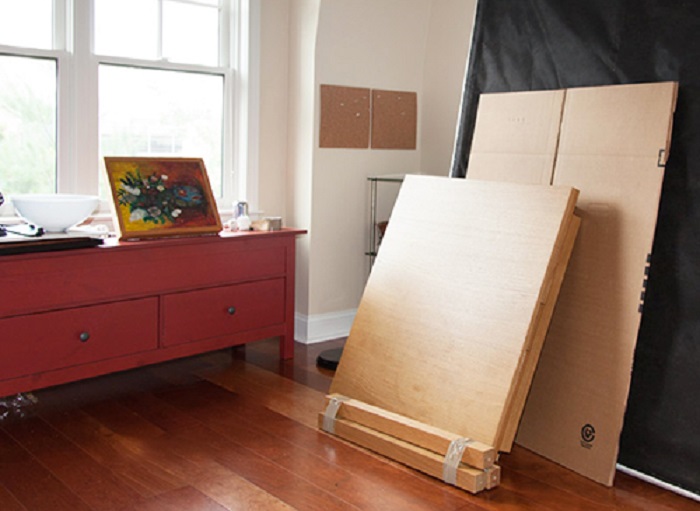
Source: Internet
It’s never simple to protect delicate objects during a move by employing the proper packing methods. All of the framed art in your home will need to be taken down and boxed up as soon as you’re ready to move out, so don’t forget to do that before you do anything else.
When dismantling and storing all of your framed artwork, safety should always be a consideration. Fragile goods like paintings and portraits can be packed in the same way as framed mirrors around the house.
- Before you begin packing up your framed artwork, make sure you have the correct cardboard boxes on hand. In an ideal situation, you’ll want to employ custom-built picture moving boxes that are both adjustable and made of thick cardboard, like dish packs. $8 is the price of one four-piece picture box with a mirror and mirrors.
- Because of the enormous mirrors and the larger proportions of some of your framed art artifacts, put your packing station on the floor. The more room you have to work with, the better it will be for your packing.
- Make a giant X on the glass sections of your paintings, photos, and mirrors using painter’s tape (not packing tape). Simply walk diagonally from corner to corner (twice) and you’ve completed this task. Glass fragments can fly into the canvas or photo paper if they are broken and fall into the box, but the tape X acts as a barrier to keep them out of harm’s way.
- CUT out and place thick cardboard over the X-ed glass parts of your fragile products. When making these cardboard cutouts, make sure to measure them to match the frame’s outer dimensions.
- Use white and soft packing paper to wrap each fragile item, such as a painting, portrait, or mirror. Use as many sheets of paper as necessary to thoroughly cover each delicately framed piece. Make paper bundles by taping the sheets together.
- As a final measure of defense, place bubble wrap on top of the paper. This is especially critical for significant or pricey artwork. To keep the bubble wrap from unraveling, tape the sheets together.
- Transfer the framed pieces into the picture and mirror boxes for safekeeping. Use bubble wrap to fill in any gaps inside the box, then fit the specialty boxes snugly, and finally secure the box with packing tape.
- You don’t want to waste time unpacking if you don’t label everything correctly. Be sure to include the FRAGILE caution as well.
6. When relocating, how to pack lamps and lampshades
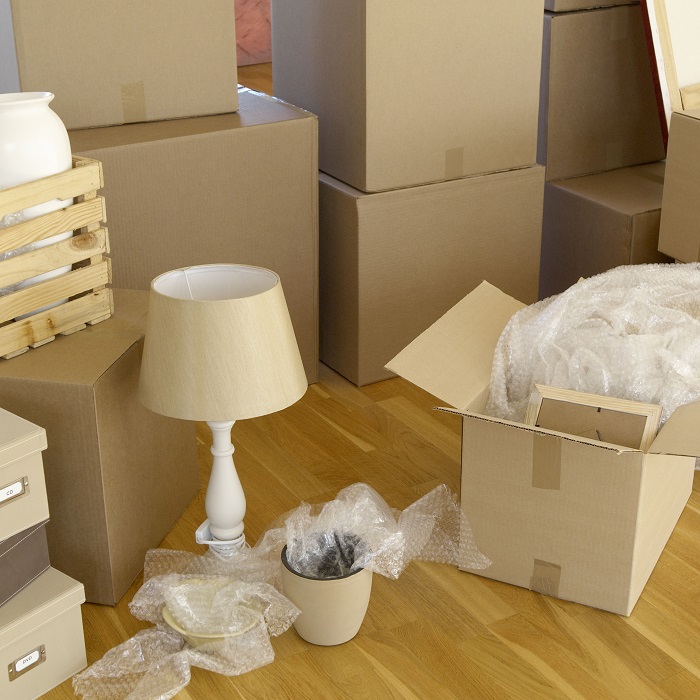
You may not be aware of all of your home’s fragile items until it’s time to box them up. When it comes to lighting, table lamps and floor lamps are a common sight in nearly every area of your house.
In addition to being fragile, lamps and lampshades are difficult to transport because of their strange and erratic shapes. While ceramic and glass lamps make up the majority of light fixtures, transporting them can be tricky because of this.
- Use the lamps’ original boxes whenever possible when relocating them. Use normal cardboard boxes of the appropriate size and form if you don’t intend to keep them.
- Wrap your fragile lamps in soft cushioning by putting crumpled paper or discarded bubble wrap on the inside bottom of each box.
- To safeguard the safety of your lamps, disassemble them before transporting them. Most lamps feature the same three essential components: a lampshade, a harp, and a bulb. Just figure out a way to divide those three items so you can protect them individually.
- Unscrew the light bulb by unscrewing the lampshade from the metal or plastic harp first. It may sound simple, but it’s not always that way.
- Securing the lamp’s cable can be done using a cable tie or by wrapping it around the lamp’s base.
- Wrap the lamp base in several sheets of packing paper and then in bubble wrap to ensure the best possible protection. Tape should not be applied directly to the lamp’s fragile surface. With both the harp and the lampshade, you should do the same.
- CAREFULLY INSERT the light into the ready box, with its base down and upright. To fit more than one lamp in a box, you’ll need a large enough substitute cardboard box and plenty of paper insulation to prevent the lamps from coming into contact with each other.
- The only exception to this rule is the lampshades, which should be stored separately in a box to facilitate reassembly. Shades are quite delicate, therefore you’ll need a separate moving container for them.
- To ensure that nothing slips during delivery, cover any gaps in the boxes with paper (newsprint is fine). When it comes to transporting fragile goods, it’s important to keep them safe at all times.
- Make sure the crates containing lamps are correctly labeled and marked as FRAGILE.
>> Related Articles: TOP 9 TIPS FOR PLANNING A HOUSE MOVE
7. How to pack jewelry for a long-distance relocation
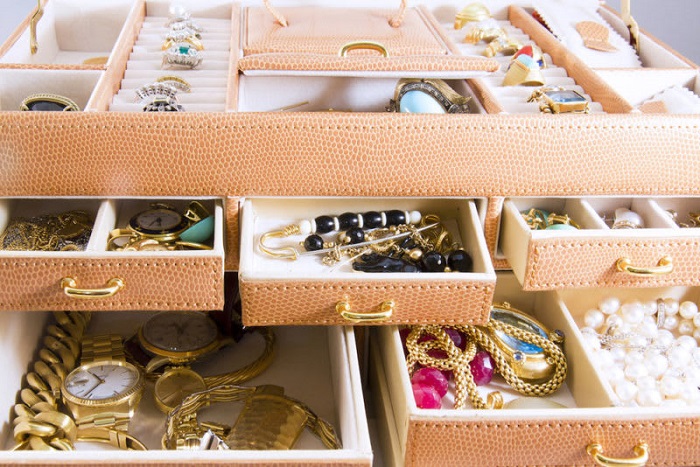
You’ll face a variety of challenges when it comes to packing your jewelry for a move. In the first place, you’ll need to make a concerted effort to keep your jewelry safe during a tumultuous time like a house relocation because most of the pieces you possess are pricey and valuable.
Because some of the jewelry pieces are so small, it will be easy to misplace them when transporting them. In addition to this, jewelry goods are often delicate and fragile, and incorrect packaging can result in costly damage, most commonly due to tangles.
If you’re relocating, here are some helpful packing recommendations for jewelry:
- BEFORE YOU PACK YOUR JEWELRY, GO THROUGH IT ALL. Sorting should take place on a large, flat surface, such as a table. Optimize your jewelry collection by categorizing your pieces. Consider getting rid of anything that is beyond repair, too worn out to wear again, or simply too cheap to pack for the move.
- Get packing paper (never newspapers), bubble wrap, and plastic wrap before you begin to pack your jewels for shipping. In addition, you’ll need some clean cardboard sheets, Ziploc bags, and packing tape. Drinking straws, toilet paper rolls in their original packaging, egg cartons, pill organizers, and elastic bands are also essential.
- Use a jewelry box, if possible, when transporting your valuables. Even though jewelry boxes are designed to store and transport jewels, if you have one, use it!
- As an alternative, you might use drinking straws (thin) or clean toilet paper rolls (thick). Then, secure the ends of your NECKLACES. One of the most prevalent issues while transferring necklaces are tangles in their long, thin chains. It is possible to add another layer of protection to the necklaces by wrapping them in packing paper. Place the paper bundles in shoe boxes or other small containers and tape them up.
- Use soft packing paper to protect your bracelets. If you have a single chain, you can utilize the drinking straw packing method as stated in the previous section. To protect delicate areas of your bracelets, place an air-filled plastic material above the paper layer (gemstones, for example). Wrap the bundles in plastic to keep them in place and prevent them from wriggling around.
- To keep your earrings secure, first insert the hook through a cardboard cutout, then place them in a plastic bag, and last wrap them in soft packing paper. Store your stud earrings in pill organizers or robust sunglasses boxes to prevent them from getting misplaced during the move.
- Wrap each ring in soft packing paper and set it into an egg carton cup. Fill any vacant spots with more paper for perfect immobilization. Finally, wrap the entire carton in the stretch wrap when you’ve placed all of your rings. Another effective approach to pack rings for moving is to wrap them in wrapping paper and put each one in a pill organizer for each day of the week.
>> Related Articles: TOP 10 TIPS TO MOVE BY YOURSELF
8. How to pack antiques in a box
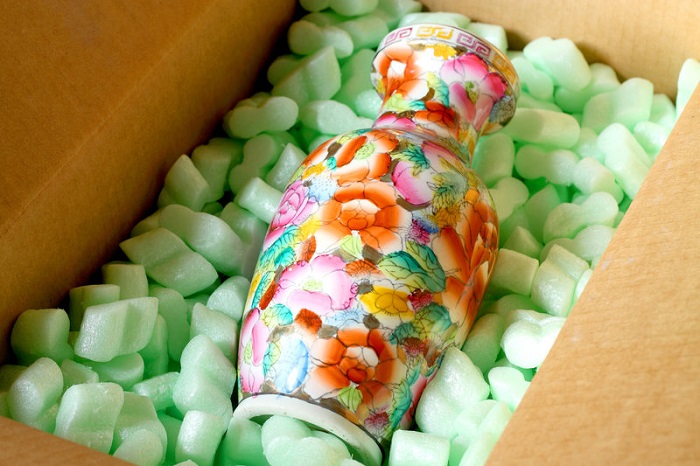
Packing all of one’s fragile belongings is tough, especially when there are so many. and too varied to use one packaging strategy. Packing a wide range of valuables, from jewelry to antique furniture, requires special care.
When it comes to relocating antique furniture, packing isn’t as simple as it appears. Yes, you can still do it if you follow the steps for packing furniture:
- If you have antique furniture, you should keep detailed records of where it came from and who owned it, as well as its estimated value. To preserve your antique furniture, you should take photos of it from every possible aspect. If any of the furniture is destroyed during shipping, this will come in handy.
- Emptying your antique furniture of anything that’s been stored inside is the simplest way to save weight and prevent damage. A little excess weight can put your task in jeopardy.
- Removing furniture parts like doors, legs, and glass shelves whenever possible is a good rule of thumb. Furniture that has been dismantled should be stored in its original container for maximum protection.
- When transporting antique furniture, be sure to secure any loosely attached parts, such as drawers or doorknobs, so they don’t open by accident. You should never apply packing tape straight to your antiques’ fragile finishes. The consequences could be dire if you do. Professional movers and packers use shrink wrap, but you may also use normal packing tape over furniture sheets to protect your items from damage.
- The first line of defense is a layer of soft wrapping paper or bubble wrap. This initial line of defense protects your antique furniture’s delicate finish from scratches, dust, filth, paint loss, and moisture. Use soft, ink-free, acid-free packing paper first, then bubble wrap to protect your furniture’s most sensitive sections.
- Shockproof your antiques by wrapping them in thick furniture blankets and securing them with duct tape. When moving, your possessions will be susceptible to shocks and vibrations, and moving blankets are a must to protect them.
- When moving antique furniture, cut out huge sheets of thick cardboard and place them over the sections where you think they will be at risk, such as the corners and edges. Tape the cardboard cutouts to the wall after that.
However, combined with the protective power of packaging sheets and bubble wrap, cardboard should be sufficient to secure your treasured antique furniture items.
>> Related Articles: TOP 10 WAYS THE FINAL MOVING COST CAN BE INCREASED
9. How to pack a fish tank for moving
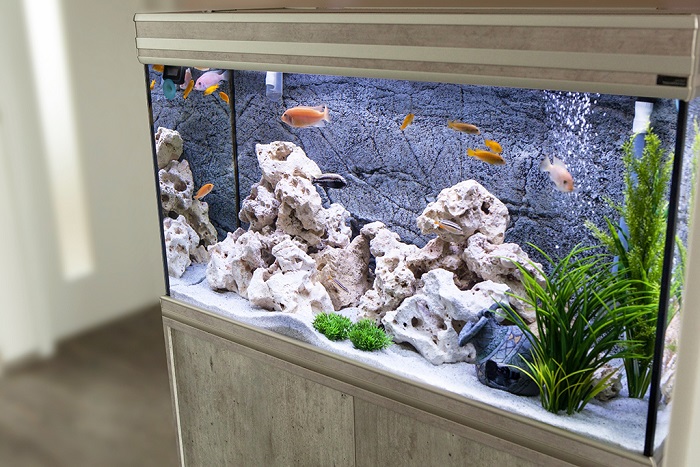
Fish tanks constructed of glass are another potentially dangerous object in your home. It’s great to have an aquarium full of lovely fish until you have to move it. Since your aquarium is delicate, you’ll need to know how best to keep it safe while moving.
Assume you’ve prepared your fish for export and safely placed them in transport containers. If you haven’t already, here are the complete instructions on how to move fish.
To transfer a fish tank, follow these guidelines:
- REMOVE ALL WATER FROM THE TANK AND POUR IT INTO TWO 5-GALLON BUCKETS. You must remove as much of the fish tank water as possible with the help of a siphon hose.
- Be sure to remove all aquarium decorations gently, including rocks, rock castles, fake plants, and signs. Afterward, wrap each of the fish tank decorations in soft packing paper, then put them in a suitable cardboard box. Add a thick layer of bubble wrap to the paper-wrapped ornaments for further protection.
- Remove all fish tank equipment and attachments, including heaters, pumps, light fixtures, filters, and so on, with extreme caution. Wrap them in white packing paper, followed by a single layer of bubble wrap, and store them in a cool, dry place. Place all of the aquarium’s components in a cardboard box and identify the moving box.
- Remove all sand or gravel from the bottom of the fish tank and clean it well. You risk shattering the glass structure if you try to relocate a fish tank without first emptying it. This stage is all about guaranteeing the safety of the entire operation. Use a bucket to transfer the sand or gravel more easily.
- You should use a vacuum cleaner to completely clean and dry your aquarium.
- Wrap the tank three times for road safety: White blankets with bubble wrap Tape each layer together to prevent unraveling during transport.
- Ensure that the fish tank is as level as possible during transportation. If you can’t secure it, don’t drive it.
>> Related Articles: TOP 5 CREATIVE WAYS TO ANNOUNCE PEOPLE YOU ARE MOVING



